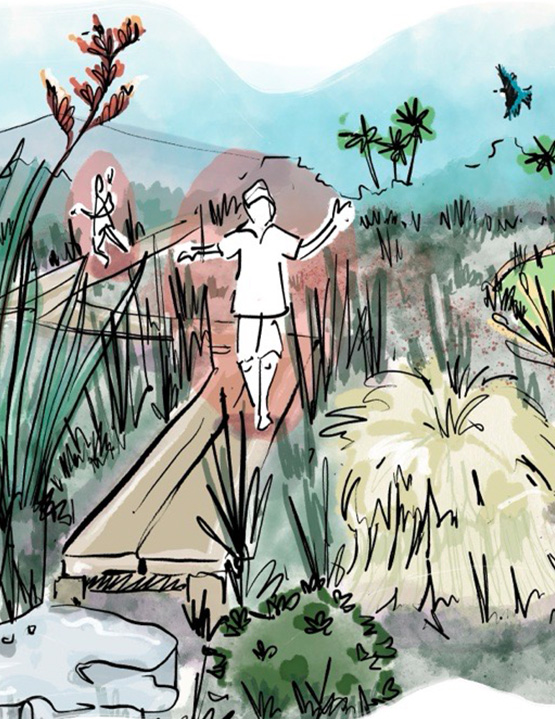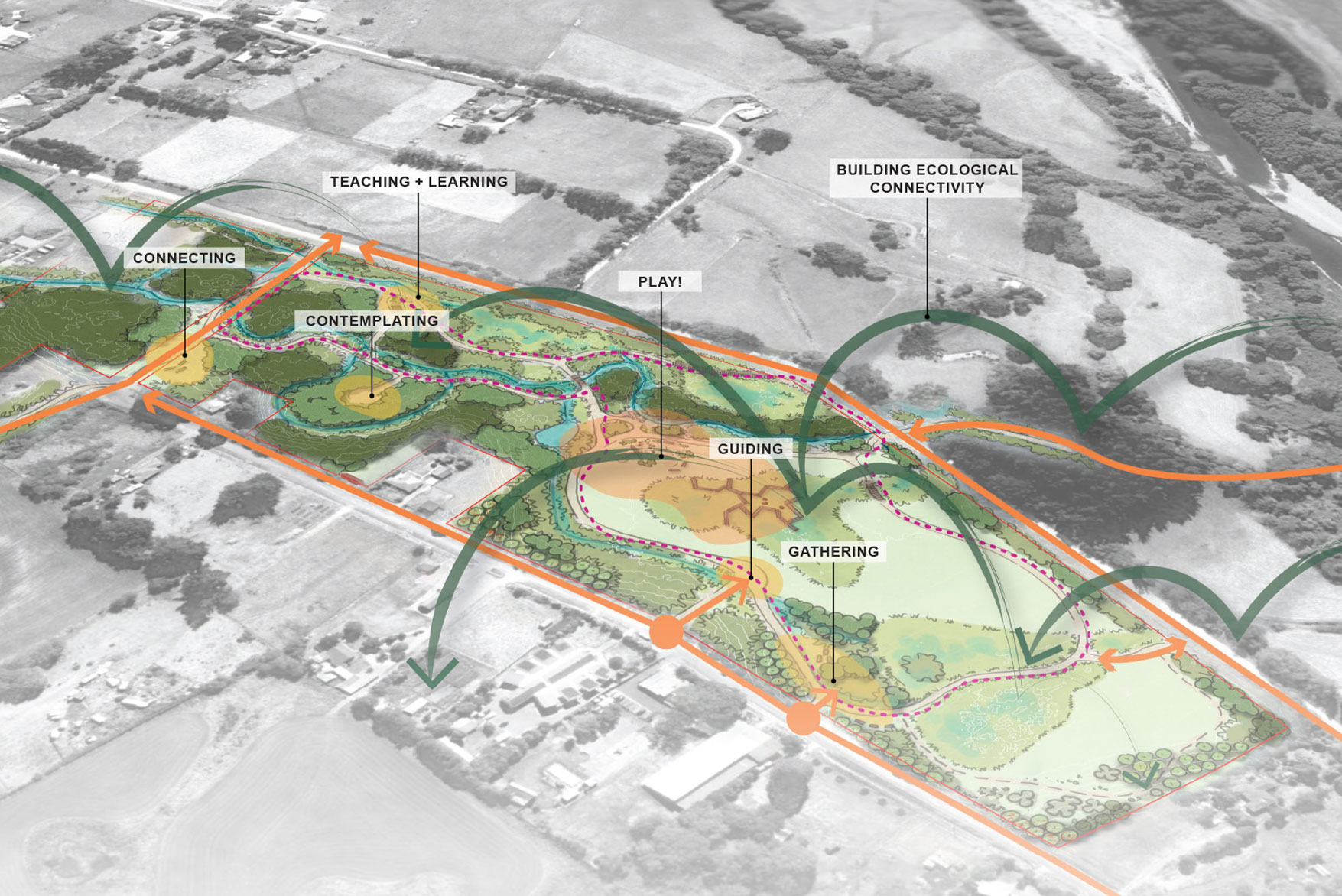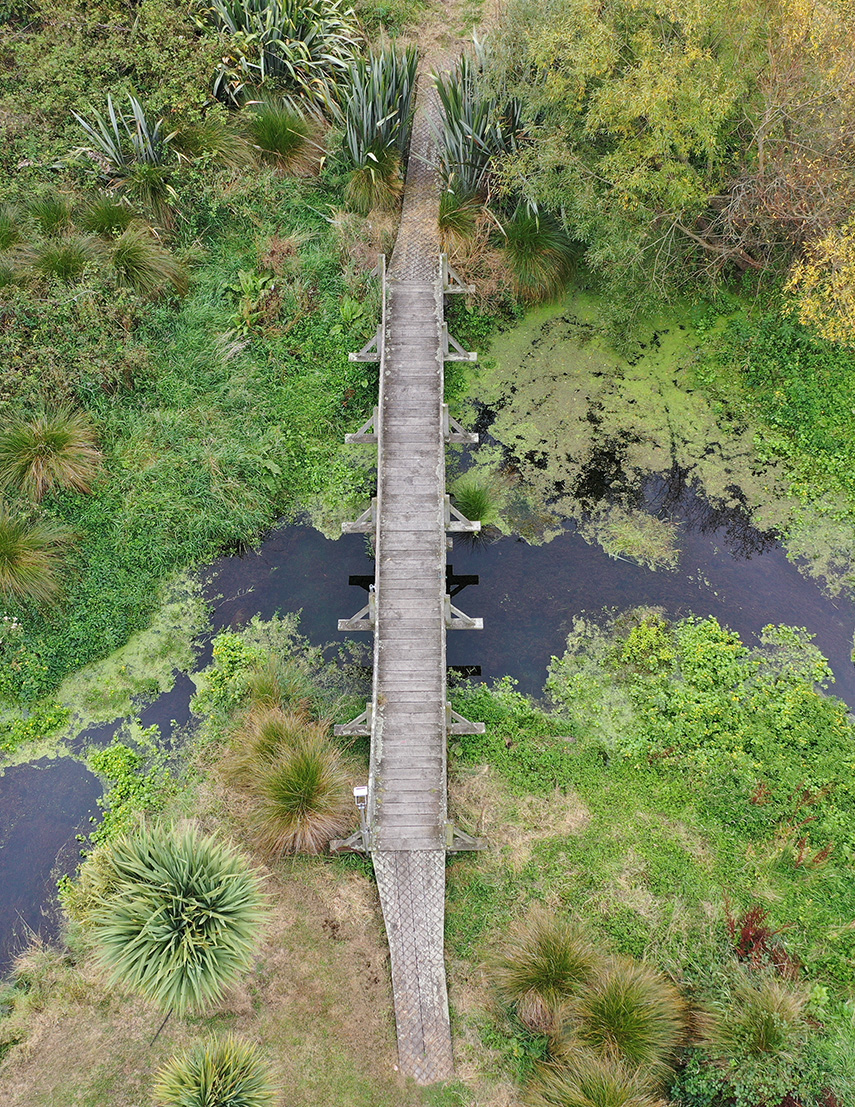Following a wānanga (meeting) in February 2025 with Te Rūnanga o Arowhenua whānau and members of Boffa Miskell’s Landscape Architecture, Ecology, and Te Hīhiri teams, additional aspirations were identified:
- Reconnect the reserve with the marae and kura (school) through safe, accessible pathways and spaces for play, learning, and discovery.
- Create spaces for rongoā practices and quiet zones to experience birdsong, wind, and flowing water.
- Enhance waterways to support habitats for taonga species like kōkopu and īnanga.
- Take a staged approach to implementation and maintenance to ensure long-term sustainability.
Boffa Miskell’s multi-disciplinary team worked collaboratively to deliver these objectives through:
- Hydrology interventions: regrading channels, isolating drains, and excavating wetlands to manage floodwaters and improve habitat.
- Ecological connectivity: native planting palettes tailored to site conditions and cultural uses, especially in wet areas.
- Play and learning zones: boardwalk mazes, quiet teaching spaces, and interactive water touchpoints for tamariki.
- Cultural spaces: design nodes along pathways for rongoā, storytelling, making, and communal activities.
- Staging plan: early maintenance access for weed control (including strategic intensive grazing) and phased planting.
Nature-based solutions were explored to enhance flood resilience, including shallow stormwater basins, reconnecting to historic stream channels, and establishing vegetation buffers to slow floodwaters. Rapid-growing native plants suppress weeds and aquatic macrophytes, while hardy species resist grazing and create canopy cover. Dead willows are retained in-situ to provide shade, habitat, and structure for birds and fish.
Boffa Miskell's biosecurity and freshwater ecology teams provided weed control options to empower whānau in on-going vegetation maintenance, supporting aspirations to collect kai and enhance mauri, while our botanists created a dynamic plant palette that offered a suite of co-benefits from medicinal to biodiversity enhancement.
At times, the native plant palette was altered from species strictly endemic to the area, to integrate native species that offered unique aesthetic, cultural, or resource-based opportunities. The fringes of the site are planted with fruit trees, especially near the Arowhenua Māori School.
The plan sets a clear pathway for transforming the Reserve into a vibrant, culturally significant, and environmentally resilient landscape. It demonstrates what’s possible within the catchment and inspires neighbouring communities and upstream whānau to participate in reviving waterways across the Canterbury Plains.




